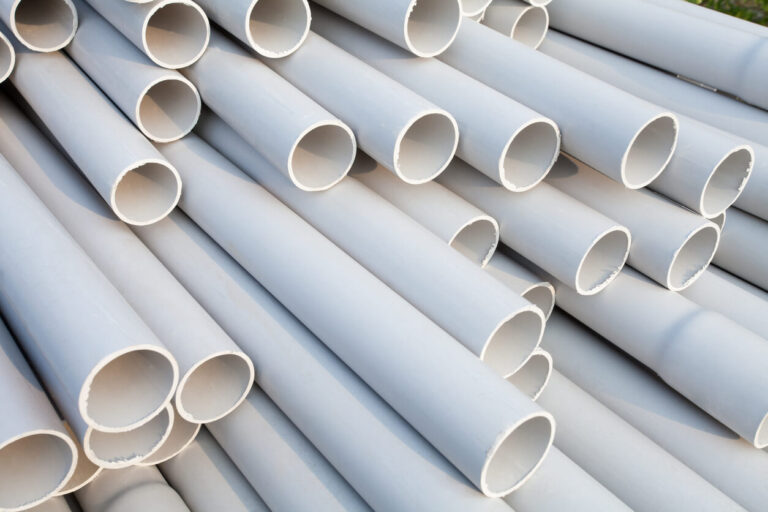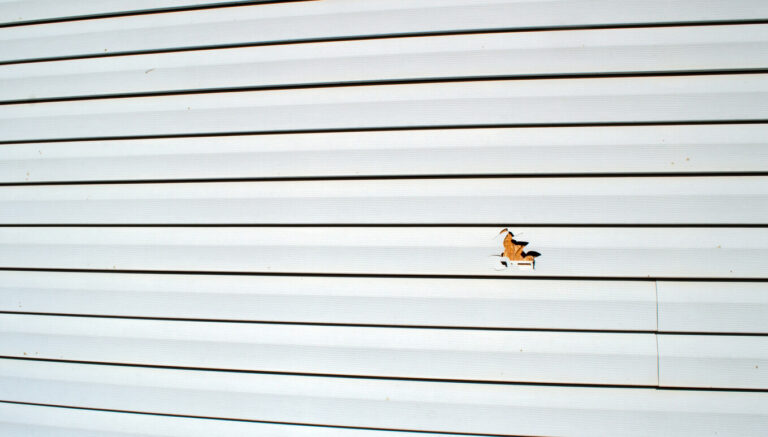Vinyl Siding 101: What is it, and What are the Benefits?

When it comes to protecting and enhancing the exterior of your home, vinyl siding is one of the most popular options. Not only is vinyl siding reliable, but it’s versatile with many options to choose from. With its numerous advantages, vinyl siding has gained popularity among homeowners seeking durability, affordability, and low maintenance. In fact, in 2021 vinyl siding was used in 24% of new homes. So, let’s talk about what vinyl siding is and the benefits of choosing it for your home.
What is Vinyl Siding?
To start, vinyl siding is a type of cladding made from durable plastic called polyvinyl chloride, or PVC. You’ve likely heard of PVC pipes before that can be used in plumbing. Since it’s used in siding, the composition also makes vinyl great for protecting the walls of buildings.
It’s designed to withstand severe weather conditions, which make it a great choice when you’re looking for a siding replacement. If you live in an area that experiences heavy rain and wind, vinyl siding may be the right choice.
Not only does it look great, there are several benefits to choosing vinyl siding for your home.

What are the Benefits of Vinyl Siding?
It’s Extremely Durable
One of the biggest benefits of vinyl siding is that it’s very durable. This means it can withstand the elements such as rain, high winds and snow storms. Another thing to consider with vinyl siding is that it’s resistant to moisture, rot, insects and more.
It’s Cost Effective
Out of the options available for siding installation, vinyl is usually the most affordable. If you choose brick or wood instead, it’s going to cost you. Vinyl offers a balance between cost and value, making it a great option if you’re on a budget, or just want to save a few bucks without sacrificing quality.
Wide Range of Styles and Colors
Vinyl siding comes in a wide array of styles, textures, and colors. Whether you prefer a traditional or modern look, vinyl siding offers numerous options to match your aesthetic preferences and enhance your home’s curb appeal.

Vinyl Siding is Energy Efficient
If you choose insulated vinyl for siding installation, it has a layer of foam that can improve your home’s energy efficiency. It helps to reduce heat transfer, making the interior more comfortable and potentially lowering energy bills.
Easy Installation
Vinyl siding is relatively easy to install, particularly when compared to materials like wood or stone. Its lightweight nature and interlocking panels simplify the installation process, potentially saving time and labor costs.
It’s Versatile
Vinyl siding can mimic the appearance of other materials, such as wood, stone, or shingles, allowing homeowners to achieve the desired look without the drawbacks and maintenance requirements of those materials. It offers versatility in terms of design and can complement various architectural styles.
It Won’t Fade
There’s nothing worse than when you notice the paint on your house start to fade. You know a huge home project is coming your way. With vinyl, you don’t have to worry about that. Vinyl siding is designed to resist fading so it will stay vibrant for much longer.

Sustainability
If you’re in the market for siding replacement, vinyl siding is considered a sustainable option. Did you know that Vinyl siding has 83% less of an impact on global warming than brick & mortar? This is due to several factors such as it’s durability, energy efficiency and recyclability.
In fact, many manufacturers offer recycling programs to responsibly manage and repurpose old vinyl siding.
It’s Practical
Let’s face it, sometimes all homeowners want is a practical product that is going to benefit them. The good news is that vinyl siding is a practical investment for your home. Because of all the benefits, you won’t be spending time repainting wooden siding, worrying about damage from weather all while staying within your budget.
Vinyl Siding Has a Great ROI
If you’re a homeowner that’s seeking a high ROI on your home, vinyl siding is an excellent choice. Siding replacements yield one of the highest ROI rates of any home improvement project, and the estimated ROI for vinyl siding is a whopping 80% more than other types of siding.
How Long Does Vinyl Siding Really Last?
Vinyl siding is known for its longevity, but how long does it actually last? The lifespan of vinyl siding can vary depending on factors such as the quality of the material, installation, maintenance, and exposure to harsh weather conditions. Here are some of the signs to look for that may mean it’s time for siding replacement.
Visible Damage
This one should be a no-brainer, but it’s important to mention. When you start to see physical signs of damage such as cracks or warping, it may be time for siding replacement.

Fading and Discoloration
While vinyl siding is designed to resist fading, hard weather and prolonged sun exposure can do a number on it. If you notice significant fading, it may be time to look at replacing your vinyl siding.
Mold and Moisture Issues
Vinyl siding is designed to be resistant to moisture, but damage can still occur. If you notice mold, moisture or mildew, you’ll need to act fast to fix these issues.
It Looks Outdated
If your current vinyl siding is outdated and no longer complements the style of your home or your personal taste, replacing it can give your home a fresh and updated look. Enhancing your curb appeal can also increase the value of your property.
Final Thoughts
The bottom line is that vinyl siding is a fabulous option for homeowners in need of siding replacement. It’s affordable, it’s durable and it looks good. What more could you want? When it comes to the siding of your home, it’s important to have the proper protection, and vinyl siding could be the solution for you.


